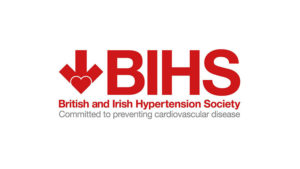The management of cardiovascular disease (CVD) in primary care has been transformed in recent years, particularly with extensive use of statins in secondary prevention. But what about the less high-tech approach of getting patients to eat more healthily? Dietary advice has traditionally been offered primarily to those needing to lose weight or lower their lipid levels. But more recently, systematic reviews have shown good evidence that dietary changes can reduce mortality and morbidity in addition to modifying some risk factors in patients with coronary heart disease. Evidence to date suggests similar benefits of healthier eating are likely in primary prevention. In this new series – Food for Thought – we sort the wheat from the chaff when it comes to dietary advice for patients with cardiovascular disease. This article will focus on the benefits of oily fish, with the good news that simply increasing oily fish intake achieves major benefits.
Practical approaches to empowering people with cardiovascular disease or diabetes
For people with long-term conditions, self-care can have as much, if not more, influence on their health than prescribed medication and treatment. Yet, in many cases, healthcare professionals become frustrated when attempts to improve peoples’ self-care behaviours prove unsuccessful. This article looks at some of the reasons why it can be difficult to encourage people with diabetes or cardiovascular disease to look after themselves effectively; what types of practice can help us to increase people’s success in managing long-term conditions; and how we can incorporate empowering techniques in our day-to-day consultations.
Sex after an MI
Rehabilitation after a myocardial infarction (MI) includes all aspects of a patient’s life – medical, physical and social. Sexual functioning is an important part of most people’s lives. Fears about whether having sexual intercourse could trigger another heart attack is the question many post-MI patients want to ask but embarrassment may stop them. Giving accurate information about sex after an MI is just as much a part of patient education as telling them about cholesterol and blood pressure and can go a long way to helping recovery and preventing further problems such as sexual dysfunction.
Stroke and TIA
Stroke is common, affecting around one in four people over the age of 45 at some time in their lives. Increasing age is a major risk factor for stroke, so the numbers of people suffering a stroke will increase with the ageing population. Primary care teams have a central role in providing effective secondary prevention, but because patients often fall between primary and secondary care, things may be missed. Taking a systematic approach to assessing risk factors, such as blood pressure, and treating them effectively can significantly reduce further stroke risk.
Quality … and beyond
Quality is the latest buzzword in healthcare. The latest GMS contract emphasises this in the Quality and Outcomes Framework (QOF) designed to measure and reward key elements of primary care chronic disease management. In this issue of BJPCN we start a new series – Points mean Prizes – on how to make sure you get all the ticks in the boxes for the data you need to collect to get maximum QOF points. The series will provide a step-to-step guide on how to score on the 76 quality indicators in the 10 clinical domains of care.
Measuring BP at home
Most people with hypertension are diagnosed and managed on the basis of blood pressure (BP) measurements taken by healthcare professionals in the surgery. Although clinic readings remain the accepted method of measuring and monitoring BP, they are widely acknowledged to be prone to inaccuracies, such as the infamous ‘white coat effect’ that can lead to artificially high readings. In addition, the relatively small number of readings generally taken in the clinic offers only a ‘snapshot’ look at BP levels that may not reflect real values. There is increasing evidence that the use of self BP measurement – with patients monitoring their own BP at home – may provide some advantages over BP measurement in the clinic or surgery. These include potentially more accurate readings and average values that are more reproducible and reliable than traditional clinic measurements. In this article we look at the evidence for the use of home BP monitoring and the accuracy of home monitors.
What to tell your patients about statins
An increasing number of patients are prescribed statins because of the growing evidence that they can dramatically reduce cardiovascular events. However, the withdrawal of one statin – cerivastatin – some time ago may have made some patients concerned about their safety. What should we be telling patients about the benefits of statins, how long they should take them for and whether there are any risks with these widely used agents?
Protecting renal function in people with diabetes
Renal disease is common and is increasing in prevalence as the main risk factor for impaired kidney function – diabetes – affects more people. Approximately 30% of patients with type 2 diabetes develop some degree of nephropathy, with some ethnic groups at even higher risk. Diabetes is now the largest single cause of end-stage renal disease in the UK, accounting for 30–40% of all cases. The very early stages are asymptomatic and the disease process develops slowly over 15–20 years, so early screening and prevention strategies are paramount in reducing the burden of renal failure. Primary care nurses are well placed to play a pivotal role in this process.
New British Hypertension Society guidelines tighten cardiovascular risk management
New British Hypertension Society (BHS) guidelines on hypertension focus on cardiovascular risk rather than risk of coronary heart disease, in order to improve the prevention of stroke as well as heart disease.
Flora Fit Street
Welcome to another unique service helping your practice achieve QOF targets
Therapies for diabetes
New European diabetes nursing journal
BHF gets kids to get fit
Salt – facts for a healthy heart
Maintaining motivation: the long haul of weight loss
There is no doubt about it, achieving and maintaining weight loss long term is a great challenge. Primary care nurses have a significant role in motivating patients to adopt a healthy lifestyle and to persevere with weight management programmes. In the last issue of BJPCN we looked at how to raise the tricky subject of obesity with patients. This time, we continue the issue by exploring how practice nurses ensure a positive working relationship with their patients with weight problems and encourage them as they tackle the long-term issue of obesity.





















